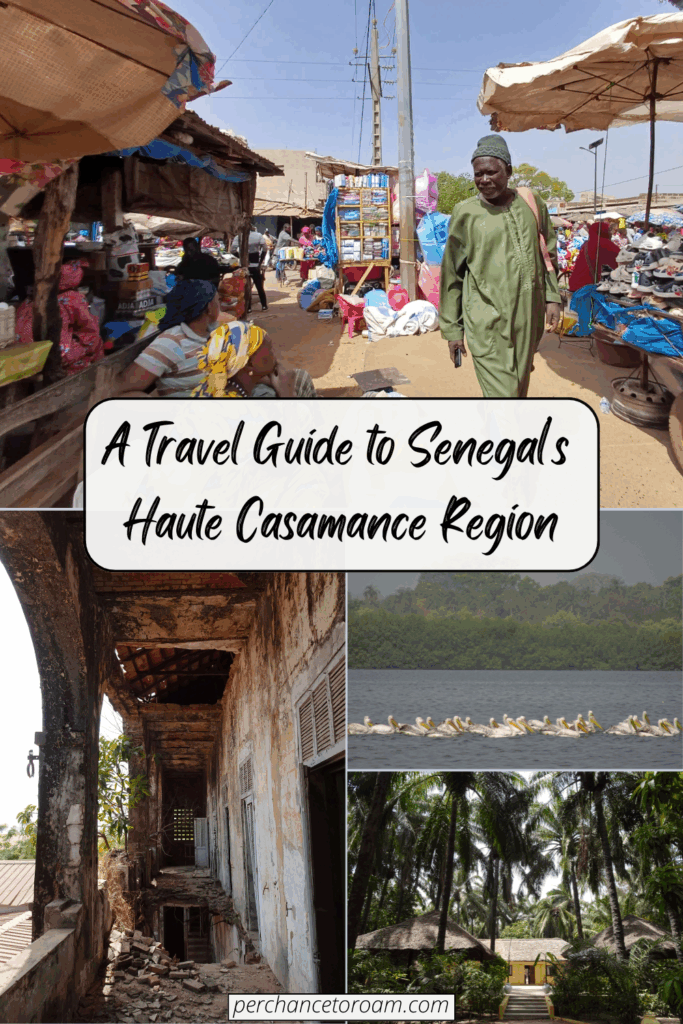Senegal’s Haute Casamance is said to be the least visited part of the country, and judging by the tiny amount of other toubabs I spotted, this certainly seems to be true. This also means that traveling in the area gives you as candid a glimpse into everyday Senegalese life as you’re likely to get.
I spent a few days exploring the region while making my way from eastern Gambia to Ziguinchor in the Basse Casamance and was amazed by the gigantic weekly market in Diaobé as well as the relaxed vibe of the sleepy provincial towns of Kolda and Sédhiou.
I hardly found any travel-related information on these places online, so for everyone else wanting to explore the region: Here’s my personal travel guide to the Haute Casamance.
This post may contain affiliate links, and I might earn a small commission at no additional cost to you. For more info, click here.
Places to Visit in the Haute Casamance
For me, there are two places in the area that are really worth your time: the sleepy former colonial town of Sédhiou and the massive Wednesday Market at Diaobé.
Kolda is a nice place to break up the journey between these two places but no must-see, while I found Vélingara to be totally forgettable, but you’ll have to visit it when making your way to (or from) eastern Gambia.
Sédhiou
Sédhiou was by far my favourite place in the region. It’s dominated by the Casamance River, so it’s much greener than the towns and cities farther east and coming from there, I got my first glimpse of the laid-back, tropical vibe in the Basse Casamance area further west.
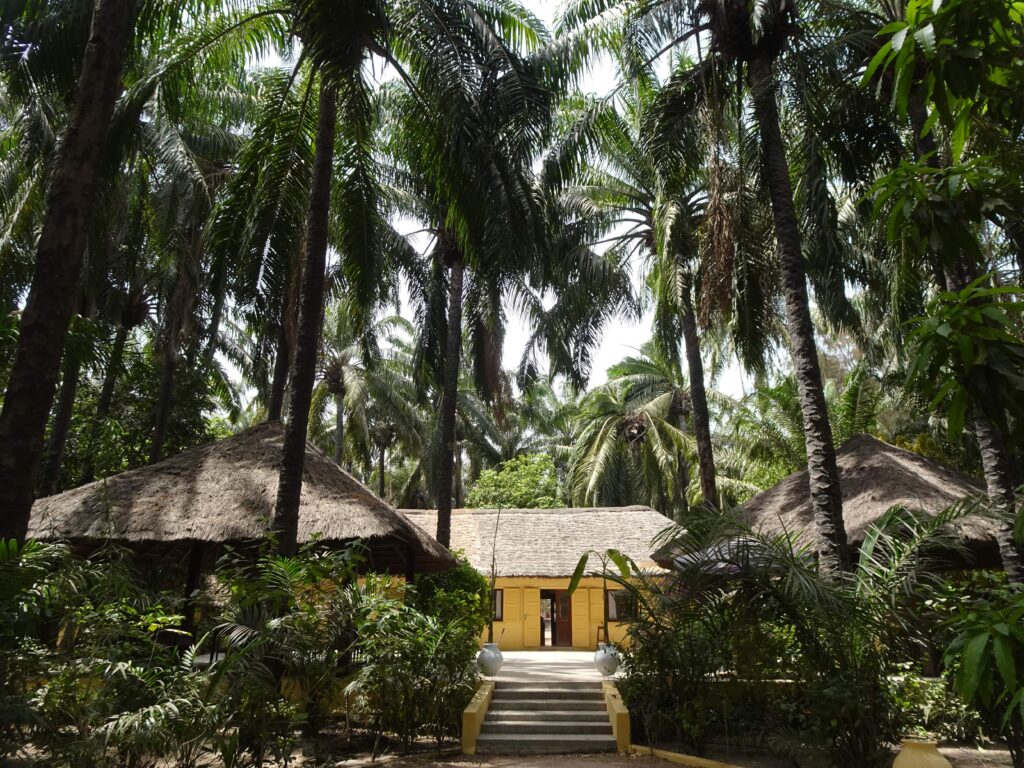
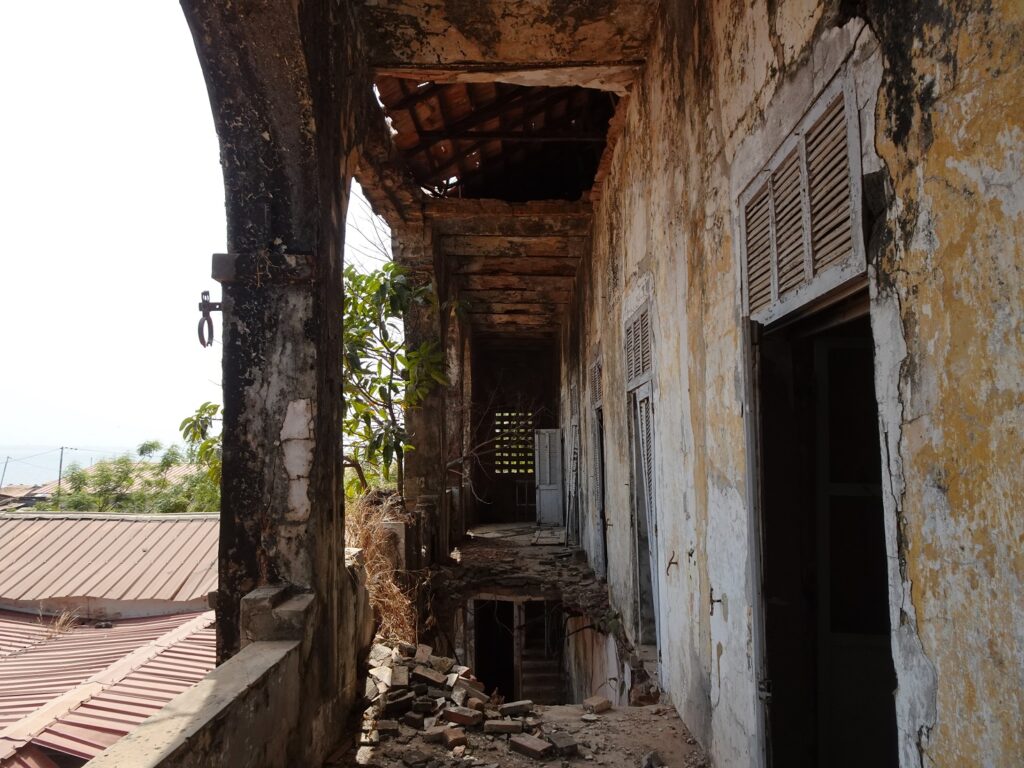
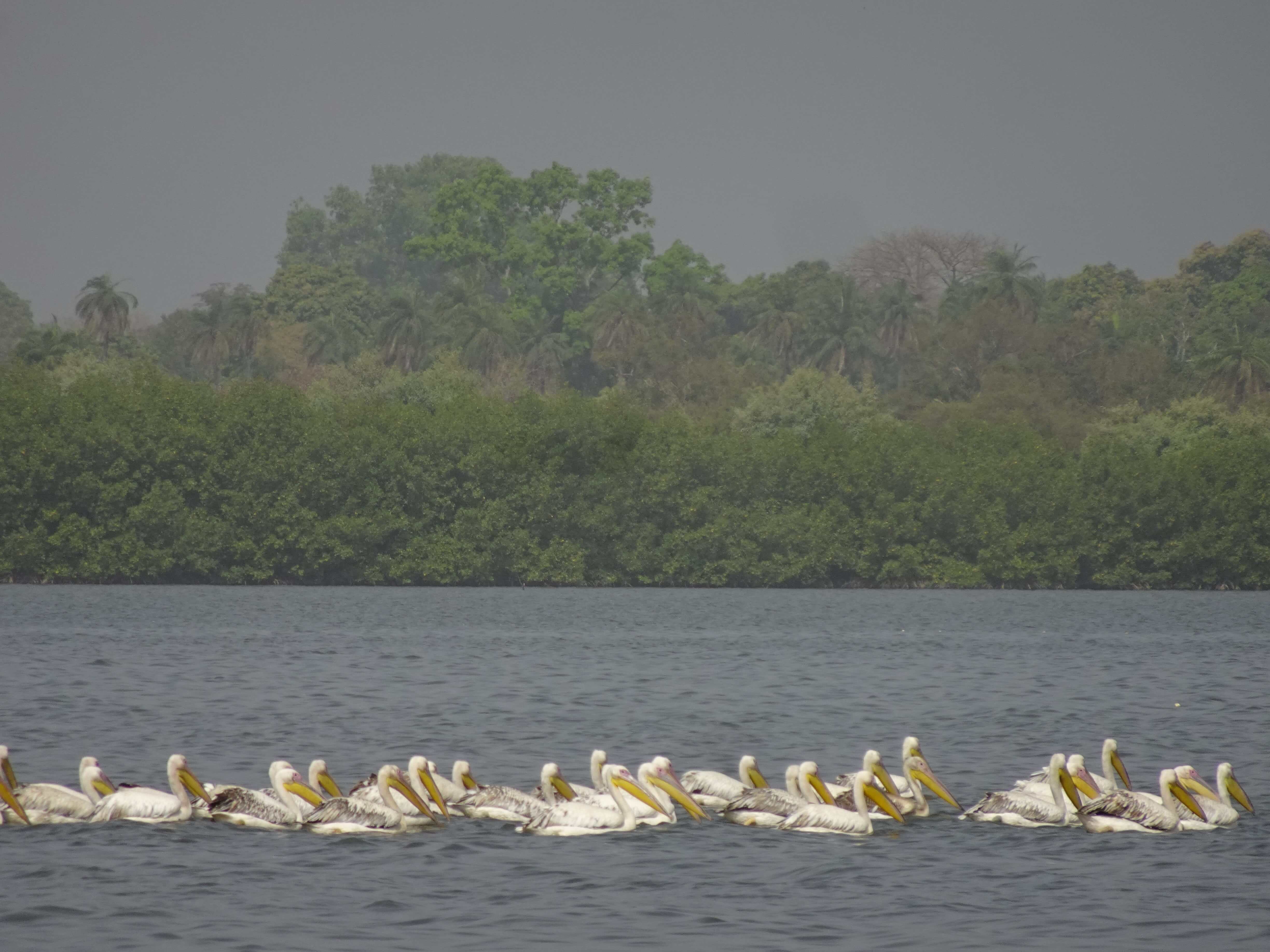
There’s enough to see here to fill a day of low-key sightseeing. One of my favourite places in the city were the ruins of the old French colonial Fort Pinet Laprade near the market, but I have a certain fondness for photogenic dilapidated places. It’s completely open, but be careful not to fall into one of the many holes in the floor.
A little further south is the La Palmeraie Hotel. While staying here was a bit above my budget, they have a lovely riverside garden full of birds, which I thought was a fantastic place for a gazelle beer under the palms.
Another cool thing to do in the city is to charter a boat to take you to the Île du Diable (Devil’s Island) in the Casamance River. The small island is said to be haunted, but I encountered no ghosts, only tons of pelicans and other water birds. I asked the staff at my hotel (Chez Nous) to organize a boat for me and ended up paying 10,000 CFA for the one-hour round-trip.
Finally, I also took a stroll through the tiny village of Sandinièr across the Casamance River, which reminded me of some of the smaller villages in The Gambia that I had explored, especially as the children all went crazy seeing a toubab. There’s an infrequent ferry going across the river, or you could charter a boat and combine it with Devil’s Island.
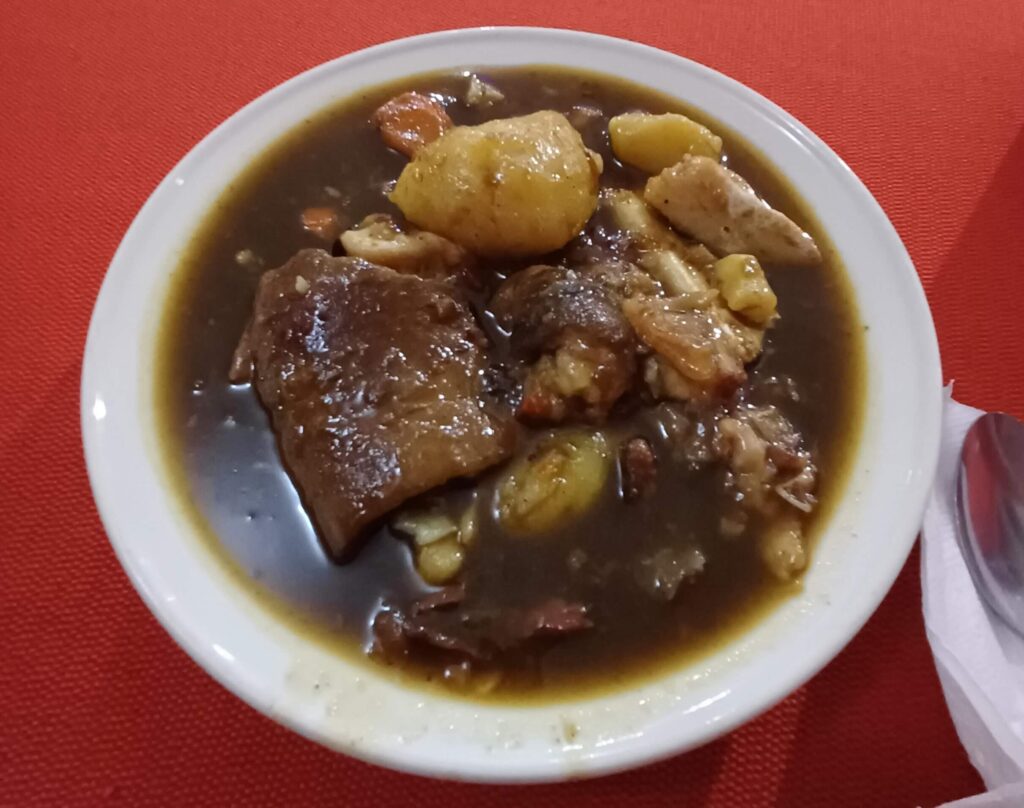
If you want to try some regional food, I can recommend Restaurant Gano, a few blocks south of the bus station. I wasn’t very hungry, so I ordered a soup, which turned out to be Calf Foot Soup (Soupe Yelle). Not really my cup of tea, but at least a new experience.
There are only a handful of Hotels in town. La Palmeraie is the fanciest, but also the most expensive. I stayed at the simple, but nice enough Chez Nous at the northern end of town.
Kolda
Kolda is the biggest city in the Haute Casamance, and a good place to break up the journey between Sédhiou and places further east. I only stopped by for a couple of hours to have a drink, get some money from an ATM and take a stroll through the market and town centre.
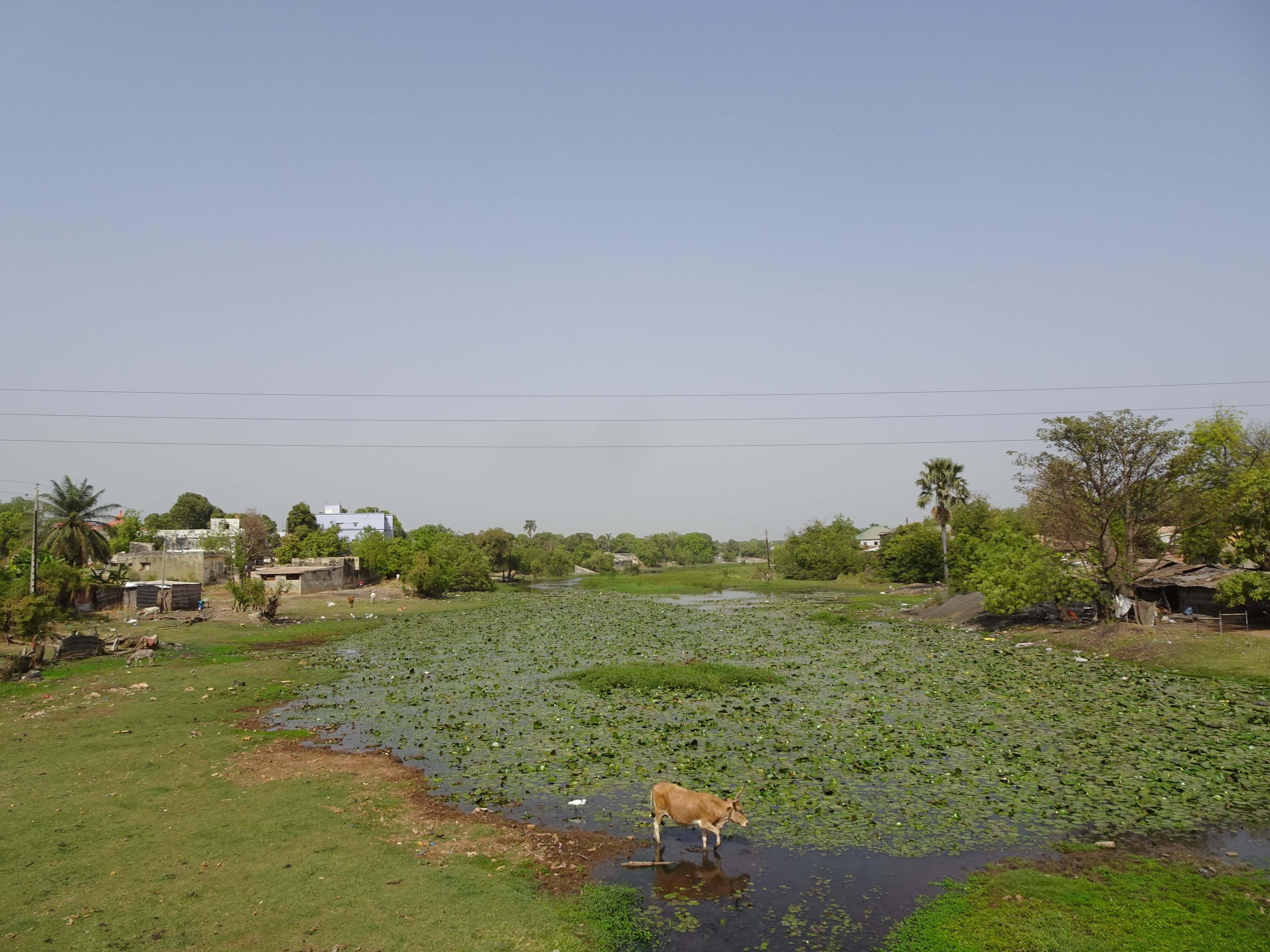
For me, the nicest area in town were the banks of the Casamance River, which is absolutely tiny here compared to Sédhiou or especially Ziguinchor further west.
Apart from that, I didn’t find much of interest in the city. The market was nice enough, but nothing I hadn’t seen in many other places in Senegal or The Gambia. As I stated, I only stopped by for a few hours, and there might be some hidden gems in other parts of the city.
If you want or need to stay overnight, Hotel Moya is said to be a decent, affordable option, while Hotel Hobbé is a bit swankier. I can attest that the staff at the latter is really friendly, as I had a drink there and asked them to look after my backpack while walking through the town.
Diaobé Market
Together with Sédhiou, tiny Diaobé was my favourite place in the Haute Casamance area. Not because of any permanent sights, but because of the huge, insanely lively loumo (weekly market) that takes place every Wednesday.
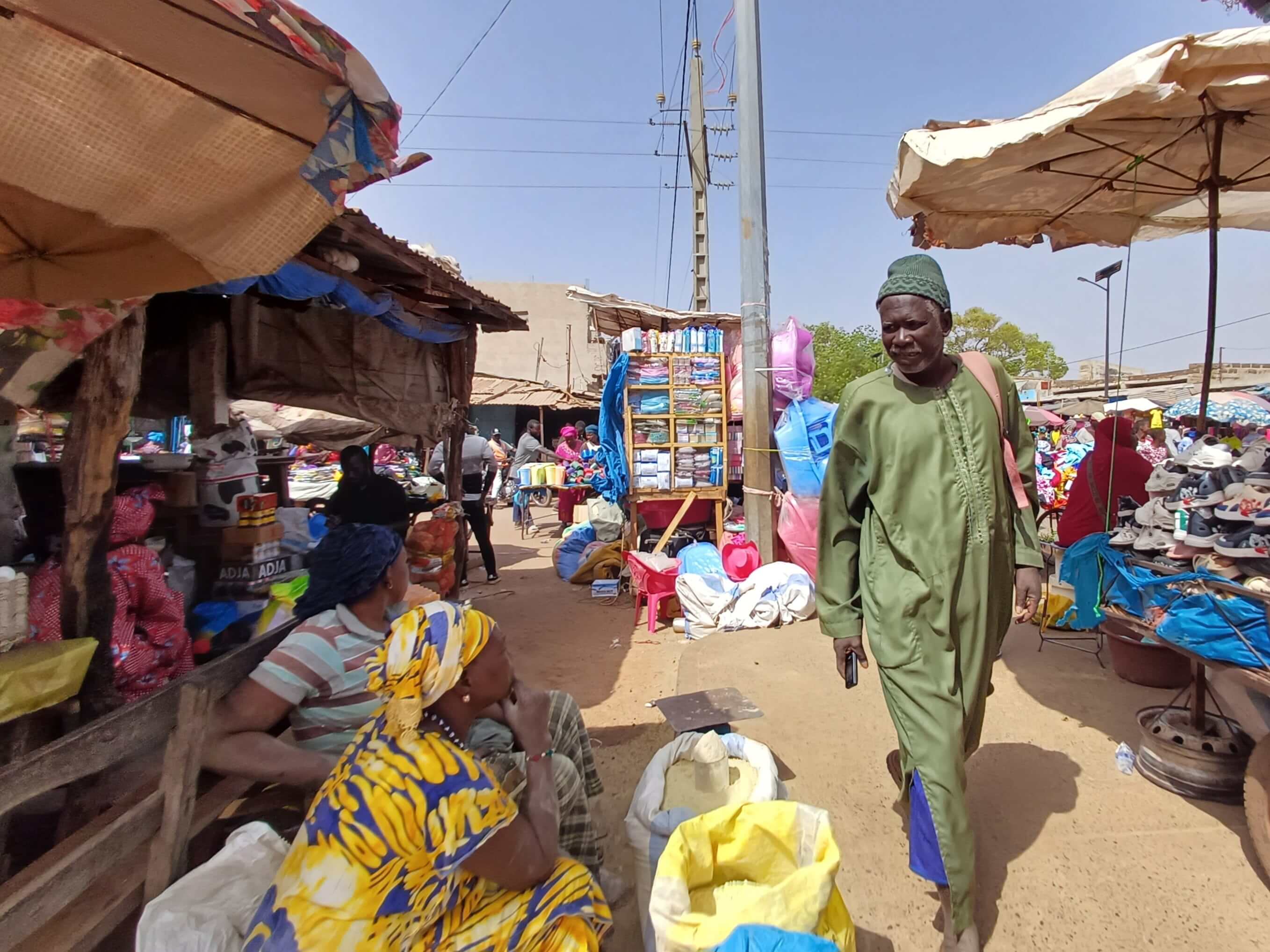
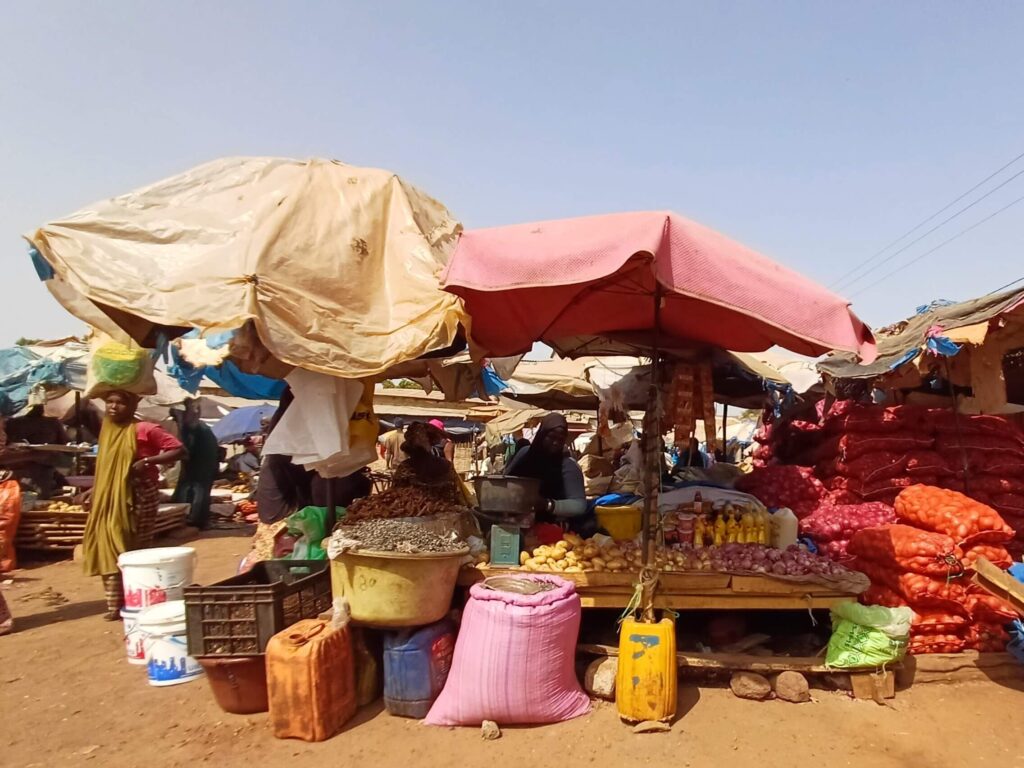
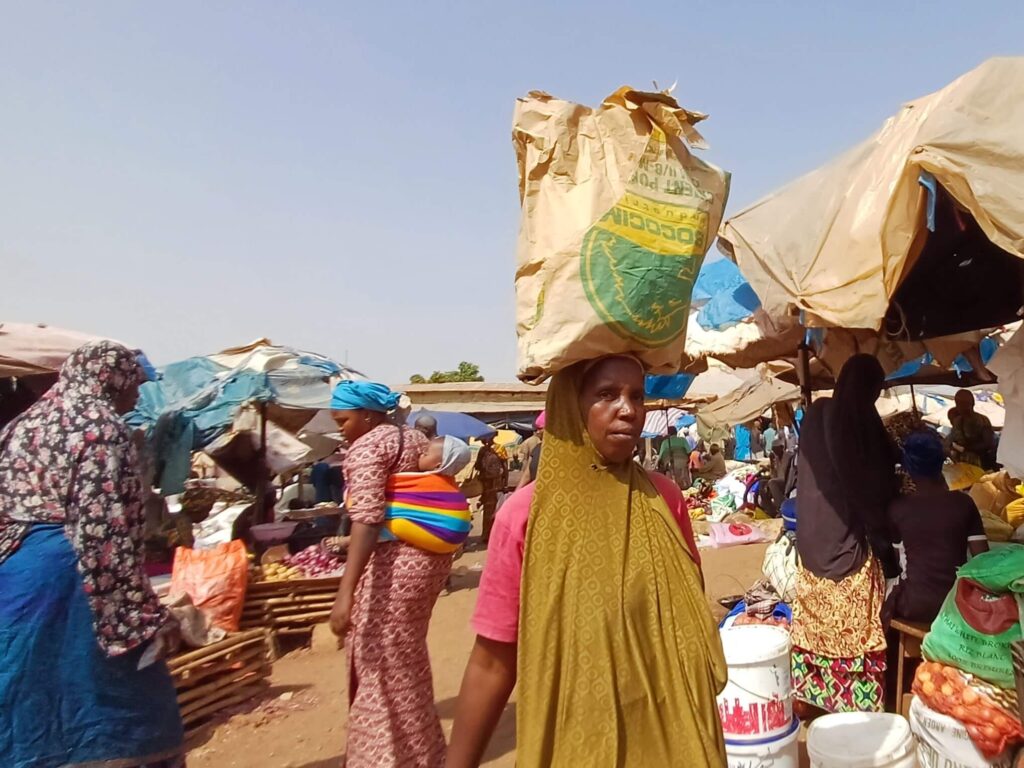
It’s really hard to describe how energetic (and chaotic) it is. There are hundreds, if not thousands, of market stalls selling everything from tomatoes to entire bed frames and I found it tremendous fun to walk through the labyrinths of stalls and watch people barter, laugh and bicker.
I didn’t see a single other white person in the hour or so I spent here, and lots of people wanted to have a chat with the weird toubab walking around. I got to practice my somewhat rusty French and asked a lot of people for a photograph.
It was no problem to find onward transport after I was done exploring, as people from all around Senegal come to the market, as well as traders from The Gambia, Guinea, Mali and even Mauritania. On other days, transport might be scarcer, but then again, there wouldn’t really be a reason to drop by here in the first place.
Vélingara
Vélingara is one of the more forgettable towns I’ve come across, and the only reason I spent some time here is that I crossed the border from Basse Santa Su in The Gambia on a Tuesday and needed a place to stay the night before moving on to Diaobé the next day.
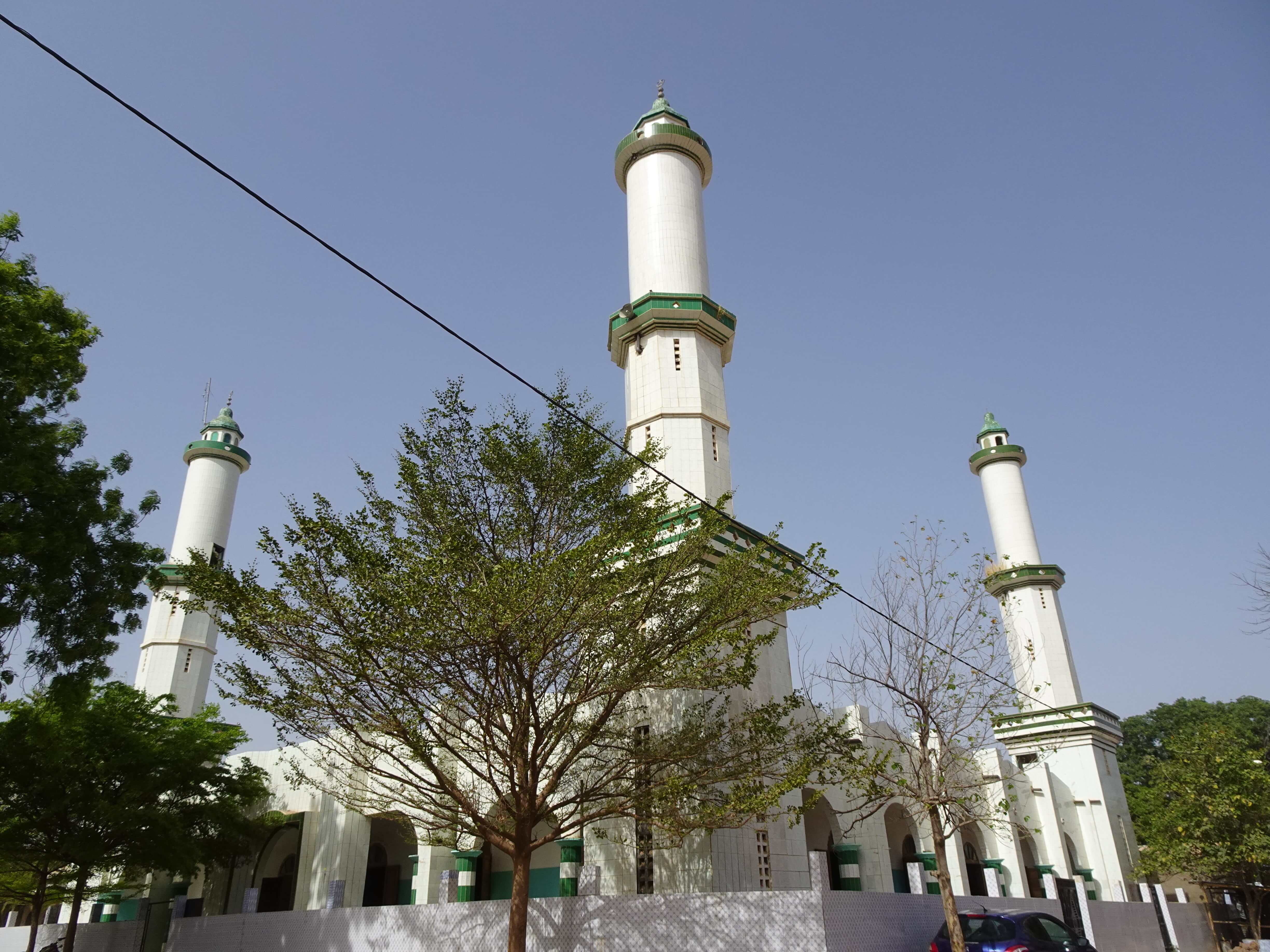
As always in this corner of the world, there is an energetic produce market and a few mosques (the most impressive of which is right next to the market). Apart from that, I didn’t come across much of interest while walking the back roads, apart from the chance to watch people going about their everyday life.
If you also need to spend a night in town, I can recommend the Hotel Lew Lewal. It’s about a kilometre south of the town, along the Diaobé road, in a leafy compound. They also serve good dinner, and the staff speaks decent English, in case your French is a little rusty (like mine was on my first day in the Senegal).
A Two-Day Itinerary for Haute Casamance
While I liked exploring the area, I probably wouldn’t have made my way to Haute Casamance without crossing it from The Gambia to Ziguinchor.
If you do the same (or come from farther east in the Senegal, like Tambacounda), I recommend spending about two days in the area, ideally including a Wednesday, so you can check out the market at Diaobé.
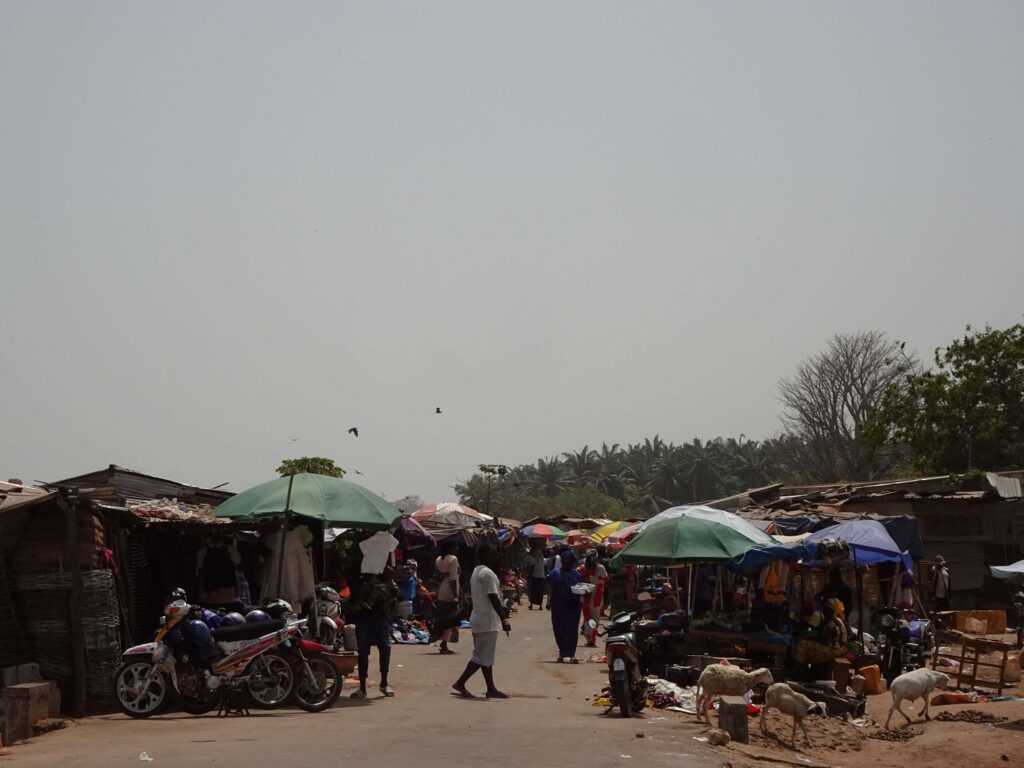
Coming from the border to the Gambia on a Tuesday evening, spend the night in Vélingara and continue to market in Diaobé early the next day. One hour is enough time to get a good impression of the market, after which you can continue to Kolda for a short stopover and onwards to Sédhiou to spend the night.
In Sédhiou I recommend taking a boat trip to Devil’s Island, checking out the ruins of the French Colonial Fort and having a drink in the beautiful garden of La Palmeraie Hotel before continuing on to Ziguinchor in the late afternoon.
Haute Casamance Map
All of the places mentioned above can be found in this map of the Haute Casamance Area.
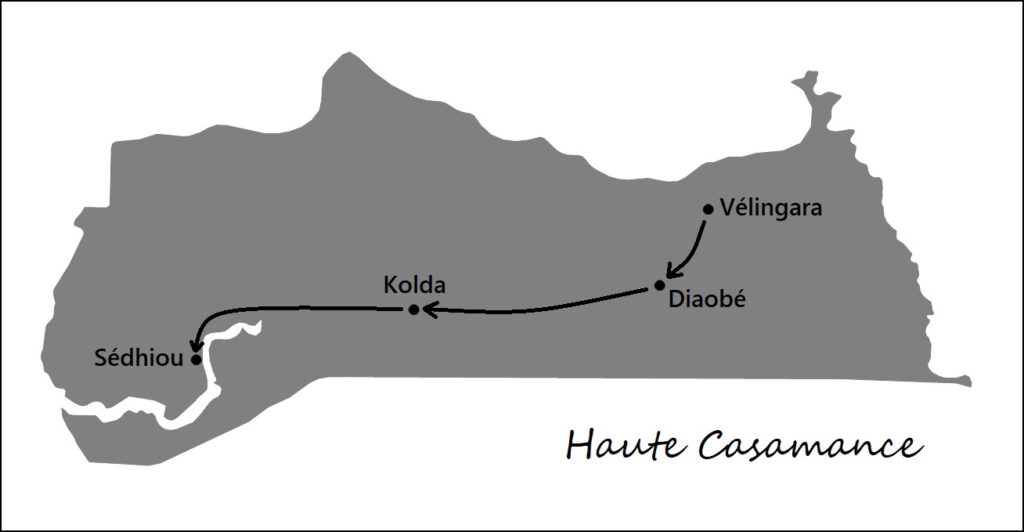
Transport in the Haute Casamance
The main mode of public transport in this part of the Senegal are the sept-places (shared station wagons for 7 passengers). I found them rather comfortable compared to bush taxis or minibuses in other parts of Africa.
Interestingly enough, there are even assigned seats (Number 1 being the passenger seat in the front, which is by far the best, Number 5 to 7 the rather uncomfortable and stuffy seats in the back). There are also shared minibuses, but they are slower and generally less comfortable (albeit a little cheaper).
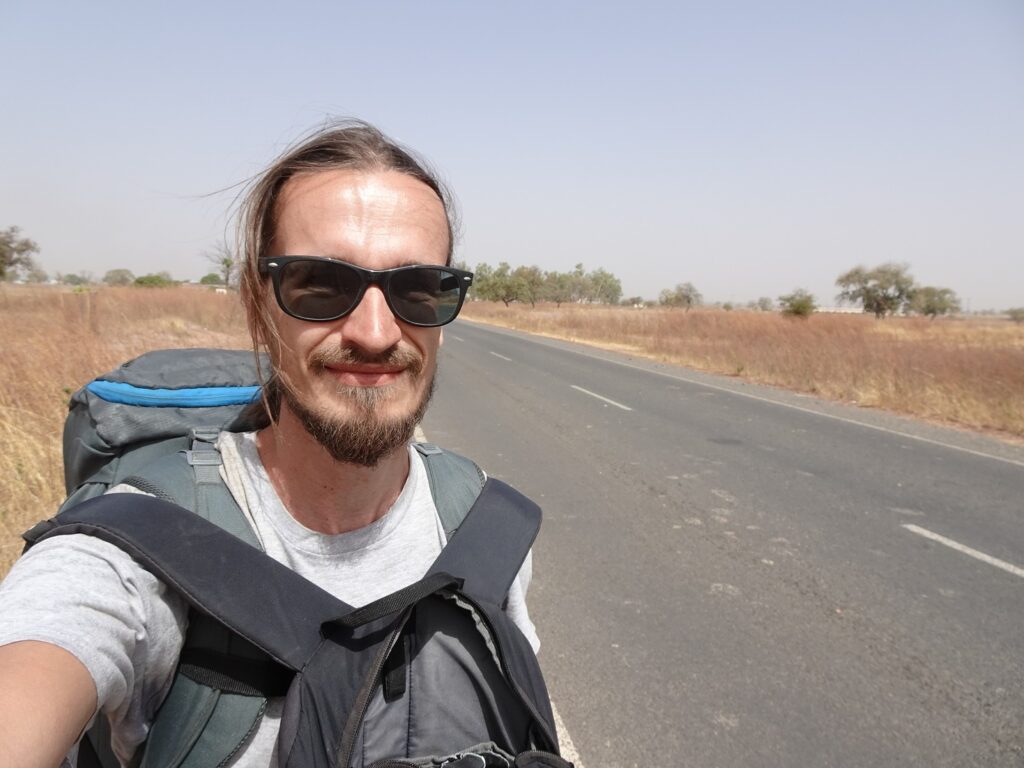
Both minibuses and sept-places run from the bus stations in every city and bigger town. Just ask for gare routière and anyone can point you in the right direction. Otherwise, you can always try and wave them down along the road between towns.

